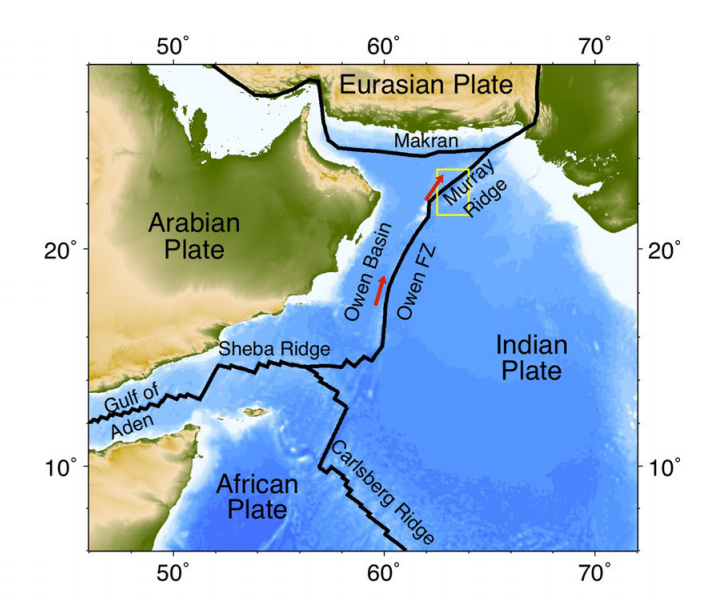Tim Minshull, with co-authors Rose Edwards from the National Oceanography Centre in Southampton and Ernst Flueh from Geomar Helmoltz Centre for Ocean Research in Germany, has used seismic data collected on the ocean floor to study the nature and origin of the Murray Ridge, an enigmatic block of crust in the northwest Indian Ocean that lies alongside the boundary between the Arabian plate and the Indian plate.

The pattern of sound speed variation with depth is different between oceanic and continental crust, and this pattern can be deduced from the time it takes for signals to travel from a sound source at the ocean surface, through the crust, to receivers on the ocean floor. The results suggest that Murray Ridge is a continental fragment. Other evidence suggests that this fragment may have separated around 150 million years ago from the block of crust that later split into Madagascar and India.
Their work has just been published in the journal Geophysical Journal International and can be downloaded here